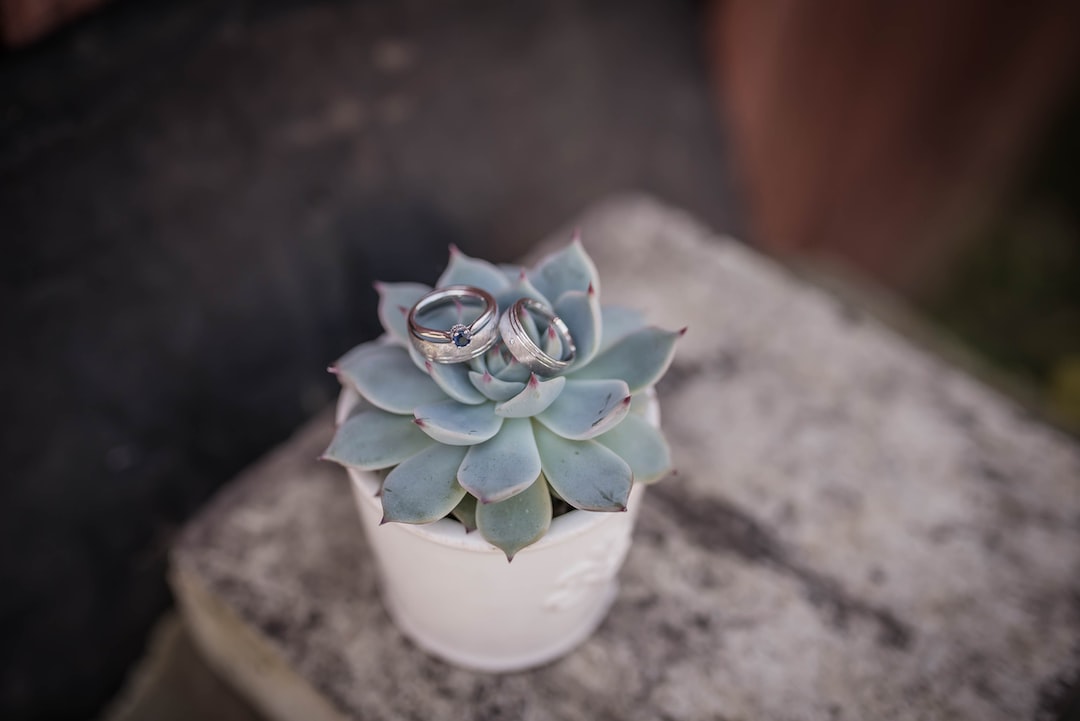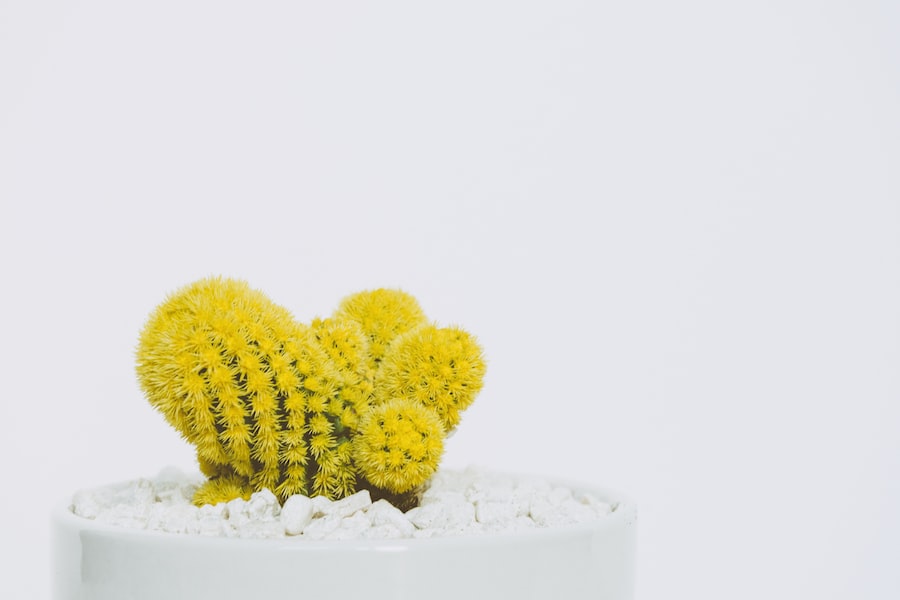Growing Garlic in a Pot: A Guide to Cultivating this Versatile Herb in Small Spaces

Growing garlic in a pot is a great way to enjoy fresh garlic all year round, even if you don’t have a large garden or outdoor space. Garlic is a versatile and flavorful herb that is used in a variety of culinary dishes and has numerous health benefits. By growing garlic in a pot, you can save space, easily maintain the plants, and have a fresh supply of garlic for cooking and medicinal purposes.
Key Takeaways
- Growing garlic in a pot is a great way to have fresh garlic at home.
- Benefits of growing garlic in a pot include saving space, controlling soil quality, and avoiding pests.
- Choosing the right pot for growing garlic involves considering size, drainage, and material.
- Preparing the soil for growing garlic in a pot involves adding compost and ensuring good drainage.
- Planting garlic in a pot involves separating cloves, planting them at the right depth, and watering regularly.
Benefits of Growing Garlic in a Pot
One of the main benefits of growing garlic in a pot is that it saves space. If you live in an apartment or have limited outdoor space, growing garlic in a pot allows you to still enjoy the benefits of fresh garlic without taking up too much room. You can place the pots on a balcony, patio, or even indoors near a sunny window.
Another benefit is that growing garlic in a pot is easy to maintain. Garlic plants are relatively low maintenance and don’t require much attention. They are also resistant to many pests and diseases, making them an ideal choice for beginner gardeners. With just a little bit of care and attention, you can have healthy garlic plants that will provide you with fresh garlic for months.
Additionally, growing garlic in a pot gives you the flexibility to grow it indoors or outdoors. Garlic can be grown indoors year-round as long as it receives enough sunlight. This means that even if you live in a colder climate or don’t have access to outdoor space, you can still enjoy the benefits of growing your own garlic.
Choosing the Right Pot for Growing Garlic
When choosing a pot for growing garlic, there are a few factors to consider. First, you’ll want to make sure the pot is the right size and depth for your garlic bulbs. Garlic bulbs need enough space to grow and develop their roots, so choose a pot that is at least 6-8 inches deep.
The material of the pot is also important. Clay or terracotta pots are a popular choice for growing garlic because they are porous and allow for better airflow and drainage. However, plastic or metal pots can also work as long as they have drainage holes.
Speaking of drainage holes, make sure the pot you choose has adequate drainage. Garlic plants don’t like to sit in waterlogged soil, so it’s important to have drainage holes in the bottom of the pot to allow excess water to escape.
Preparing the Soil for Growing Garlic in a Pot
| Soil Type | Soil pH | Soil Temperature | Soil Moisture |
|---|---|---|---|
| Loamy | 6.0-7.0 | 60-70°F | Moist, but not waterlogged |
Choosing the right soil is crucial for growing garlic in a pot. Garlic prefers well-draining soil that is rich in organic matter. You can use a potting mix specifically formulated for vegetables or herbs, or you can create your own mix by combining equal parts of compost, garden soil, and sand.
Adding compost and fertilizer to the soil is also important for the growth and development of garlic plants. Compost provides essential nutrients and improves soil structure, while fertilizer helps promote healthy growth. You can add compost and a slow-release organic fertilizer to the soil before planting your garlic bulbs.
It’s also a good idea to test the pH level of the soil before planting. Garlic prefers slightly acidic soil with a pH level between 6.0 and 7.0. You can use a pH testing kit to determine the acidity of your soil and make any necessary adjustments by adding lime or sulfur.
Planting Garlic in a Pot: Step-by-Step Guide
To plant garlic in a pot, start by choosing the right garlic bulbs. Look for bulbs that are firm and free from any signs of mold or disease. You can purchase garlic bulbs from a garden center or online, or you can use cloves from garlic you already have at home.
Before planting, separate the cloves from the bulb, making sure to keep the papery skin intact. This will help protect the cloves and prevent them from drying out. You can plant multiple cloves in a single pot, spacing them about 4-6 inches apart.
Plant the garlic cloves in the pot with the pointed end facing up and the flat end facing down. Push each clove about 2 inches into the soil, making sure they are covered with soil but not buried too deep. Water the pot thoroughly after planting to settle the soil and provide moisture to the garlic cloves.
Watering and Fertilizing Garlic in a Pot

Proper watering and fertilizing are essential for the growth and development of garlic plants. Garlic prefers evenly moist soil, so it’s important to water regularly but not overwater. Check the soil moisture by sticking your finger about an inch into the soil. If it feels dry, it’s time to water.
During the growing season, water the garlic plants whenever the top inch of soil feels dry. Be sure to water deeply to encourage deep root growth. Avoid overhead watering, as this can lead to fungal diseases. Instead, water at the base of the plants or use a drip irrigation system.
Fertilize the garlic plants every 4-6 weeks with a balanced organic fertilizer. This will provide them with the nutrients they need for healthy growth. Avoid using high-nitrogen fertilizers, as this can promote excessive leaf growth at the expense of bulb development.
Maintaining Garlic in a Pot: Pruning and Harvesting
To maintain garlic plants in a pot, it’s important to prune them regularly. This helps promote air circulation and prevents diseases. Remove any yellow or brown leaves as they appear, as well as any flower stalks that may develop. This will redirect energy towards bulb development.
Harvesting garlic is one of the most rewarding parts of growing it in a pot. Garlic bulbs are ready to harvest when the leaves turn yellow and start to dry out. Gently dig up the bulbs using a garden fork or trowel, being careful not to damage them. Shake off any excess soil and allow the bulbs to dry in a cool, dry place for a few weeks before storing.
Common Problems and Pests in Growing Garlic in a Pot
While garlic is generally resistant to many pests and diseases, there are still a few common problems to watch out for when growing it in a pot. Overwatering is one of the most common issues, as garlic plants don’t like to sit in waterlogged soil. Make sure the pot has adequate drainage and water only when the top inch of soil feels dry.
Underwatering can also be a problem, especially during hot weather. Garlic plants need consistent moisture to grow properly, so make sure to water regularly and deeply.
Pests such as aphids and spider mites can also be a problem for garlic plants. These pests can be controlled by spraying the plants with a mixture of water and dish soap or by using organic insecticidal soap.
Using Garlic Grown in a Pot: Culinary and Medicinal Uses
Garlic is not only delicious but also has numerous culinary and medicinal uses. In the kitchen, garlic can be used in a variety of dishes, including soups, stews, stir-fries, and sauces. It adds flavor and depth to any recipe and can be used fresh or cooked.
Medicinally, garlic has been used for centuries for its health benefits. It has antibacterial, antiviral, and antifungal properties and is believed to boost the immune system, lower blood pressure, and reduce cholesterol levels. Garlic can be consumed raw or cooked, or it can be made into supplements or extracts.
Growing Garlic in a Pot for a Sustainable Lifestyle
Growing garlic in a pot is a great way to enjoy fresh garlic all year round, even if you don’t have a large garden or outdoor space. It saves space, is easy to maintain, and can be grown indoors or outdoors. By following the steps outlined in this article, you can successfully grow garlic in a pot and enjoy the benefits of fresh garlic for cooking and medicinal purposes. So why not give it a try and start growing your own garlic for a sustainable lifestyle?



